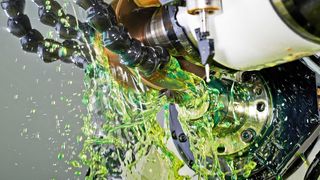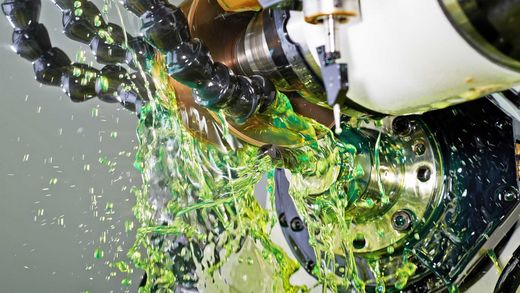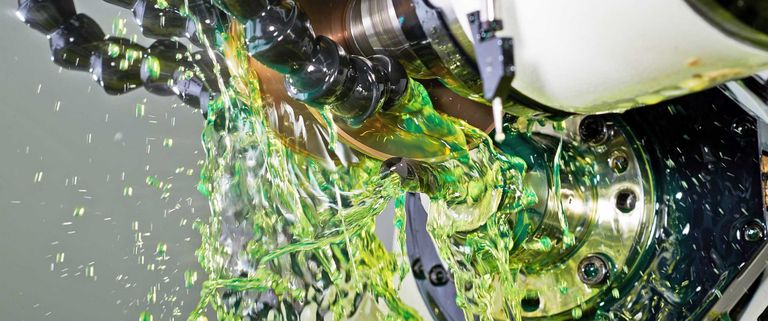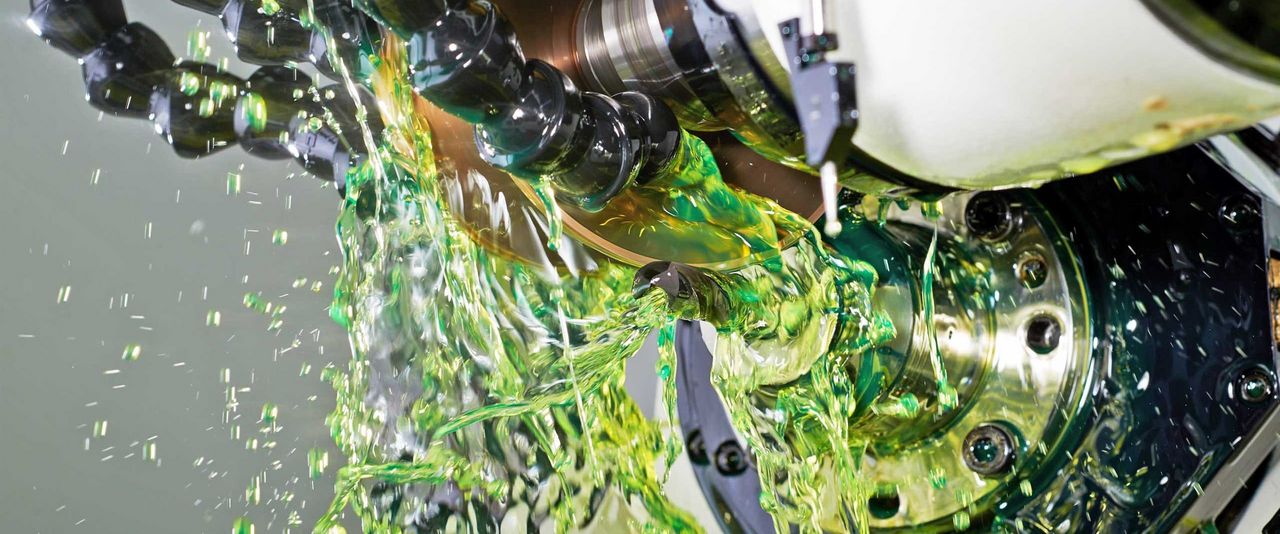Tool Manufacturing in the Aerospace Industry: The Two-in-one Machine Concept Combines Spark Erosion (EDM) With Grinding
Like the automotive manufacturers, aerospace manufacturers are incorporating new, lightweight materials into their products to reduce weight and increase fuel efficiency. These materials are challenging to machine and require the use of carbide and PCD tools. These tools, in turn, pose challenges for tool grinders, which can be solved by combining eroding and grinding functions on the same machine platform.
Today’s aircraft are made of 80 percent light materials such as carbon, aluminum, and carbon fiber reinforced plastic (CFRP). These materials are machined with tools made of tungsten carbide or polycrystalline diamond (PCD). Tool manufacturers can efficiently machine carbides with conventional tool grinding methods. However, PCD is difficult to grind even with diamond wheels. Here, a one-to-one grinding ratio occurs. In other words: Both the grinding wheel and the workpiece loses the same amount of material, which makes the process cost-intensive. This is why WALTER has developed its two-in-one machine concept. It combines spark erosion (EDM) and grinding in a single machine platform.
The HELITRONIC VISION DIAMOND 400 L, HELITRONIC POWER DIAMOND 400, HELITRONIC RAPTOR DIAMOND, and HELITRONIC DIAMOND EVOLUTION tool grinding machines from WALTER offer exceptional efficiency and productivity thanks to their two-in-one design. Users can erode PCD tools with these machines as well as grind carbide tools with the same machine. This eliminates the time-consuming process of moving workpieces to another machine.
The big plus for tool manufacturers in the aerospace industry? EDM as well as grinding, or combinations of the two machining methods on one machine, allows the production of carbide as well as PCD tools. This allows tool manufacturers to expand into new business areas or increase their growth without incurring additional risks or jeopardizing cost efficiency.
Practical experience shows that in some cases entire steps in the production chain could be omitted because the eroded tools no longer need to be reground or polished. An enormous increase in the production of PCD tools. The machines are also equipped with the WALTER HELITRONIC TOOL STUDIO. This software solution makes programming both intuitive and easy.
Increase Efficiency for Carbide Tools
A popular carbide tool in the aerospace industry is the "fir tree cutter". Tungsten carbide "fir tree" or "Christmas tree" milling cutters are used for finishing turbine blade seats of jet engines - the intersection point of the turbine blade to the turbine disc. Aerospace manufacturers must hold tolerances of 3 μm to 5 μm for these components. A value that can only be achieved with a multi-step process. The Two-in-One machine, the HELITRONIC VISION 400 L or HELITRONIC POWER 400, is suitable for this application.
After the first grinding, a correction measurement is carried out on a WALTER HELICHECK measuring system. This provides high accuracy and repeatability in the micrometer range for scanning grinding wheel and cutter geometries. The fine adjustments are made using the system's mold compensation software (FTC), ensuring high precision and reliability during the second grinding operation.
Specific applications of PCD tools
Common tools used in aerospace are end mills, drills, countersinks, and 3D printing technology. PCD tools for aerospace applications are usually split into three categories:
- Tools with PCD inserts made of soldered and polished plates.
- PCD cutting edges manufactured with vein-technology
- Tools that have full PCD tips.
Hundreds of thousands of rivets are set in aircraft wings alone, in order to ensure maximum stability. PCD rivet hole drills ensure precise and burr-free holes. With these tools, EDM and grinding ensure the required geometry and surface precision.
Most commonly, CFRP materials are used in hybrid construction for the outer fuselage of an aircraft The material is usually made of CFRP in combination with aluminum. Cutting tools with sintered PCD cutting edges on a carbide body are ideal for machining.
Are you a manufacturer of aerospace tools? Does the machining of light materials pose a challenge for you? We are experts in the field of carbide and PCD tools. Our specialists will be happy to advise you.












